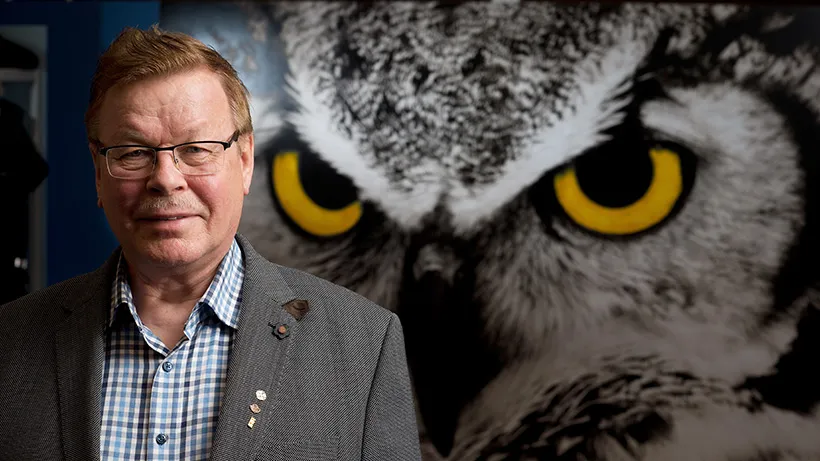There is room among the big players – midcap enterprises have tremendous growth potential

Companies in the midcap category have the highest potential for boosting Finnish exports. The fastest road to growth is through acquisitions. This has been the path taken by Aulis Asikainen’s Comatec, which has an impressive 28 acquisitions under its belt.
Midcap enterprises have every opportunity to be among the drivers of growth and exports in Finland. They have sufficient resources and they are already engaged in international operations.
A midcap enterprise has an annual turnover of EUR 50–300 million and more than 250 employees. Depending on the method of calculation, there are 300–400 enterprises in this category in Finland.
According to Pertti Lähdeaho, Financing Manager at Finnvera, various corporate reorganisation measures are the fastest option for reaching the next level.
“Midcap enterprises have potential, but purely organic growth is a long road to take,” Lähdeaho says.
The midcap category includes a large number of subsidiaries of large foreign corporations as well as family businesses.
According to the PwC Global Family Business Survey, a report published over two years ago, seven per cent of Finnish family businesses aim for aggressive growth, while as many as 89 per cent look to grow at a moderate pace. The surveyed enterprises indicated they are specifically seeking growth in the international markets.
“Enterprises need to have people with export- and culture-related expertise concerning new countries. The basic requirement for success is that the product is very good and there is demand for it in the global market. Rising through the ranks to enter the midcap category is difficult purely by subcontracting,” Lähdeaho explains.
Moving forward by making acquisitions
Aulis Asikainen’s Comatec has an impressive story of growth. Over a period of 33 years, the company has grown from a one-man enterprise into a group with more than 500 employees.
This development has been propelled by Asikainen’s personal drive to grow the company. International business has been part of the strategy.
“We were already doing international sales during the recession of the 1990s. We had to. We won assignments in the United States and Germany with the help of our partners at the time. They had strong relationships in those markets and they were familiar with the culture,” Asikainen recalls.
Comatec is a Tampere-based engineering company that specialises in engineering design and project management for the technology industry and machine building. Comatec has subsidiaries in Estonia and Poland. The group also holds a stake in an Indian company that it obtained as part of an acquisition.
After Comatec’s first acquisition 15 years ago, the group has continued to acquire companies almost non-stop, bringing the total number up to 28.
“Acquisitions are a more effective way to achieve growth. The most difficult thing before making an acquisition is evaluating how the target fits the rest of our business. When the deal has been completed, you need to focus on how to integrate the acquired business. Over the years, we have developed a clear path. We can make two acquisitions per year. That seems to be the ideal rate from the perspectives of integration and financing,” Asikainen explains.
The impact of acquisitions is clearly reflected in Comatec’s export figures. Two years ago, direct exports amounted to EUR 1.5–2 million. Last year, the figure approached EUR 5 million. Comatec’s total annual turnover is EUR 36 million.
The engineering company's turnover would place it in the SME class, but it is considered a midcap enterprise in terms of the size of its personnel.
“Direct exports have grown threefold since the recession that began in 2009. The economic slowdown again forced us to look for clients abroad,” Asikainen says.
He admits that Comatec’s international growth has also required a lot of mental growth. The company has recruited new experts. On the Board of Directors alone, there are two university professors. Four of the Board members are external to the company.
“We have hired business experts, a lawyer, a business analyst and many more. We are increasingly investing in technological development and the efficiency of project management,” Asikainen adds.
Growth requires money
It takes money to achieve growth and internationalisation. According to Asikainen, Finnvera has played a big role in Comatec’s growth by providing guarantees. The engineering company has also had cooperation projects with Business Finland.
According to Kalle Åström, Growth Loan Programme Manager at Finnvera, midcaps are compatible with all of Finnvera’s financial instruments except Entrepreneur Loans.
He highlights the Growth Loan and bonds as examples.
A Growth Loan supports a company’s equity. It is a junior loan, which means it is subordinated to senior loans.
In practice, companies seek an unsecured Growth Loan from Finnvera in order to obtain more financing from other financial institutions. For example, financing of EUR 1 million can be arranged by having 20 per cent of it internally financed and 30 per cent covered by a Growth Loan. The remainder can then be financed by a bank loan.
“With a bond, an entity acts as the issuer and sells the bond to investors. Finnvera can subscribe for half of the entire bond issue at a maximum. Bonds are suited to large financing requirements exceeding EUR 5 million,” Åström explains.
Fact: What is midcap?
- An SME is a company that has an annual turnover of at most EUR 50 million and less than 250 employees.
- Typically, an SME employs 50–249 people. Finland’s 2,600 SMEs make up less than one per cent of Finnish companies.
- Midcaps are one level above SMEs in size. A midcap enterprise has an annual turnover of at most EUR 300 million. Midcaps have more than 250 employees.
- Finnvera’s Growth Loan is intended particularly for midcap enterprises.
